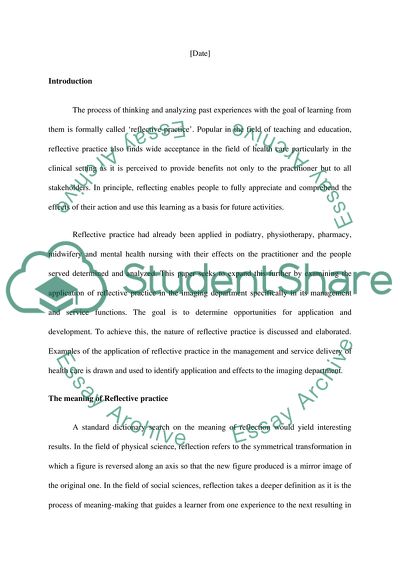Cite this document
(Reflective Practice and its Application in the Imaging Department Coursework, n.d.)
Reflective Practice and its Application in the Imaging Department Coursework. Retrieved from https://studentshare.org/nursing/1736481-discuss-the-importance-of-reflection-and-the-consequences-of-this-for-the-future-improvement-of-patient-services-in-nhs-imaging-departments
Reflective Practice and its Application in the Imaging Department Coursework. Retrieved from https://studentshare.org/nursing/1736481-discuss-the-importance-of-reflection-and-the-consequences-of-this-for-the-future-improvement-of-patient-services-in-nhs-imaging-departments
(Reflective Practice and Its Application in the Imaging Department Coursework)
Reflective Practice and Its Application in the Imaging Department Coursework. https://studentshare.org/nursing/1736481-discuss-the-importance-of-reflection-and-the-consequences-of-this-for-the-future-improvement-of-patient-services-in-nhs-imaging-departments.
Reflective Practice and Its Application in the Imaging Department Coursework. https://studentshare.org/nursing/1736481-discuss-the-importance-of-reflection-and-the-consequences-of-this-for-the-future-improvement-of-patient-services-in-nhs-imaging-departments.
“Reflective Practice and Its Application in the Imaging Department Coursework”, n.d. https://studentshare.org/nursing/1736481-discuss-the-importance-of-reflection-and-the-consequences-of-this-for-the-future-improvement-of-patient-services-in-nhs-imaging-departments.


